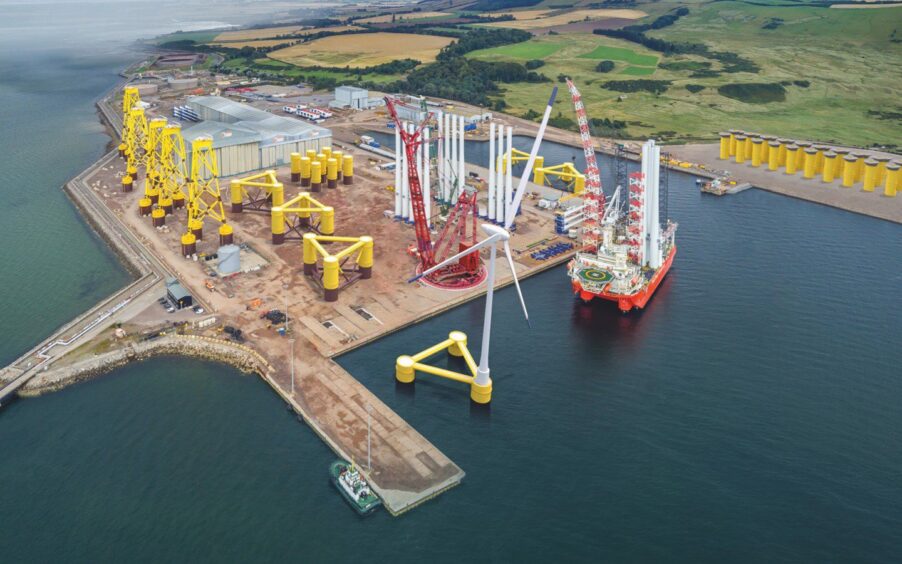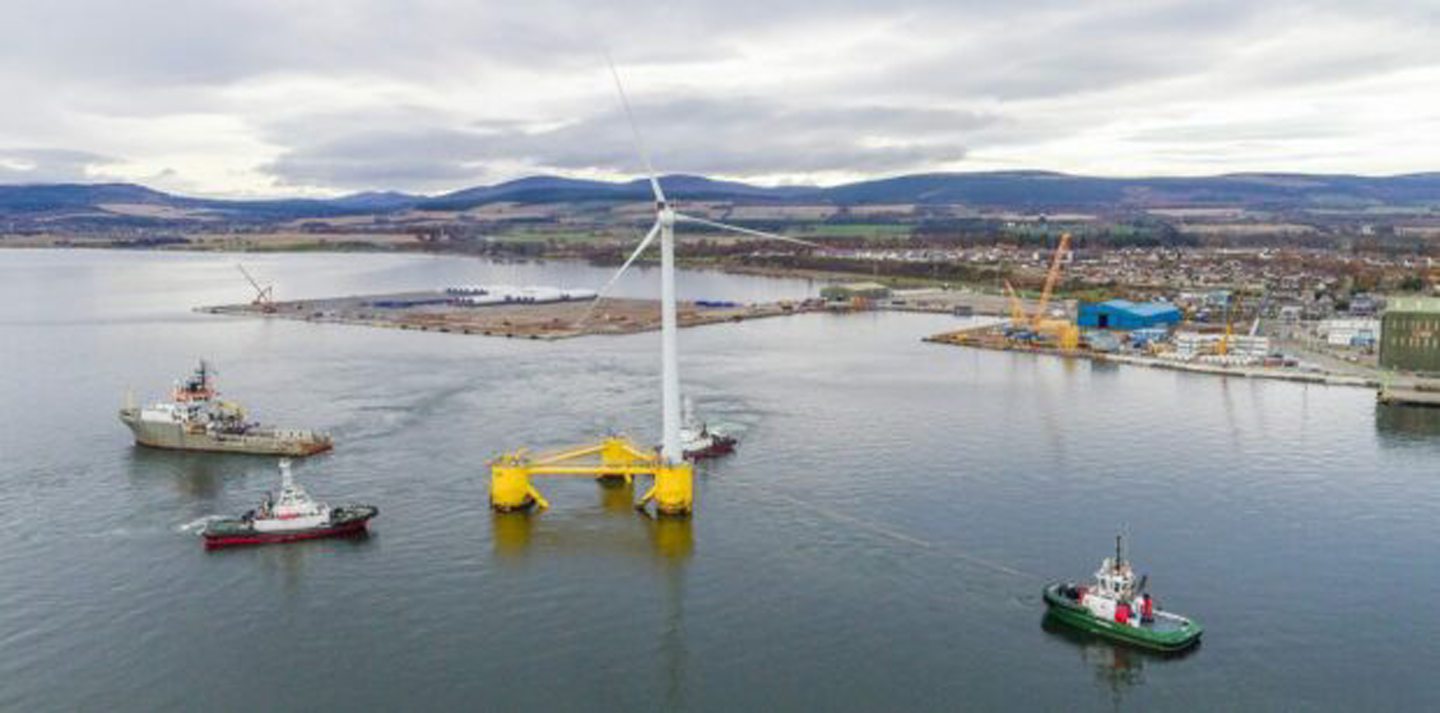
A new study has outlined the “monumental” challenges of scaling up floating offshore wind turbines (FOWTs) to a gigawatt-scale wind farm.
Aberdeen-headquartered Apollo and Norwegian firm DOF conducted the study on possible installation methods for the “monumental challenge” of developing gigawatt-scale floating offshore wind farms.
So far, no wind developer has attempted to deploy FOWTs at the gigawatt-scale.
The world’s largest floating wind farm is currently Equinor’s 88MW Hywind Tampen project in Norway, while the largest in the UK is the 50MW Kincardine wind farm.
However, there are 12 gigawatt and multi-gigawatt scale floating wind in the pipeline in Scotland across the ScotWind and INTOG leasing rounds.
With the industry set to rapidly scale up, addressing the installation challenges specific to floating turbines will be key.
Commissioned by the ORE Catapult, the study sought to apply the knowledge gained from demonstrator floating wind arrays, fixed wind cables and floating oil and gas production facilities to FOWTs.
Floating offshore wind at GW scale
The study developed a ‘base case’ installation method, which looked at ways to pre-install the mooring components, tow out the commissioned FOWTs, connect the moorings, and install the cables.
It then compared different options for mooring and cable installation with the base case.
Among its key findings, the study found a two-year installation campaign depends on favourable weather and no major unplanned delays.
Apollo and DOF also found the worldwide availability of required towing and mooring vessels is “highly constrained” and is “likely to present a major commercial risk to floating wind projects”.
Mooring and cable installation
Apollo said the “groundbreaking” study explored various installation scopes, including FOWT towing, mooring connections and cable connections to identify potential bottlenecks and risks.
Apollo offshore renewables director Nigel Robinson said the £145,ooo investment in the study “underscores the importance of understanding the challenges of gigawatt-scale floating wind installation early on”.
“By examining different mooring and cable system designs and their influence on the overall installation scope, we can make informed decisions that drive progress in the offshore renewable energy sector,” Mr Robinson said.
DOF vice president for renewables Karl Daly said the study marks a “pivotal advancement” in deploying gigawatt-scale floating offshore wind projects.
“By focusing on practical vessel-specific case studies, we gain valuable installation insights that enable us to enhance scalability and efficiency,” Mr Daly said.
“This collaborative effort underscores our commitment to refining the complexities of floating offshore wind.”
ORE Catapult team leader for floating offshore wind Sean Snee said the project will be “extremely valuable” to the floating wind sector.
“The insights and outcomes delivered in this report, demonstrate some of the methodologies proposed to be utilised for floating offshore wind, as well as highlighting some of the challenges to be overcome,” Mr Snee said.
Alongside installation challenges, establishing maintenance facilities and ports are also emerging as key challenges in developing the UK’s floating wind.
Recommended for you


 © Supplied by Flotation Energy
© Supplied by Flotation Energy © Supplied by Port of Cromarty Fir
© Supplied by Port of Cromarty Fir